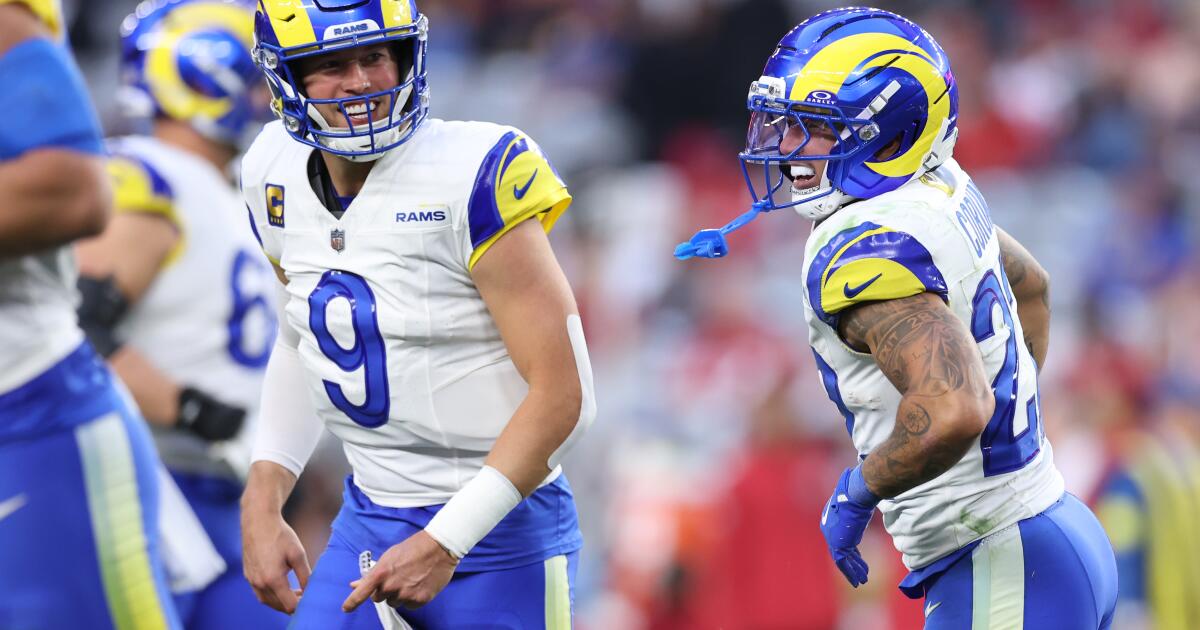Matthew Stafford among four Rams players selected to the Pro Bowl
Rams quarterback Matthew Stafford, receiver Puka Nacua and edge rushers Jared Verse and Byron Young were voted to the Pro Bowl, the NFL announced.
Stafford, 37, has passed for a league leading 4,179 yards and 40 touchdowns, with five interceptions, for a Rams team that is 11-4 and currently seeded sixth for the NFC playoffs. The Rams play the Atlanta Falcons on Monday night in Atlanta in the second-to-last game of the regular season. Stafford also made the Pro Bowl in 2014 and 2023.
Quarterbacks Sam Darnold of the Seattle Seahawks and Dan Prescott of the Dallas Cowboys also made the NFC roster.
Nacua, a third-year pro, leads the NFL with 114 catches and ranks second with 1,592 yards receiving. He was also voted to the Pro Bowl as a rookie in 2023.
Young, also a third-year pro, has amassed 11 sacks, which ranks ninth in the NFL. This is his first Pro Bowl recognition.
Verse has 6 1/2 sacks and is regarded as one of the league’s most disruptive forces. He also made the Pro Bowl as a rookie last season, when he was also voted NFL defensive rookie of the year.
The Pro Bowl Games will be held Feb. 3 in San Francisco.
